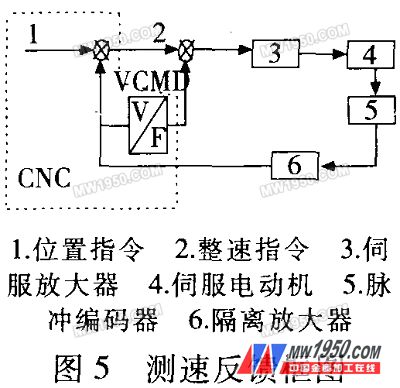
Privacy statement: Your privacy is very important to Us. Our company promises not to disclose your personal information to any external company with out your explicit permission.
Sixth, ED-NC-32 EDM machine tool
Fault phenomenon; C-axis often runs at high speed, no alarm signal; there is no alarm signal when starting from C-axis high speed.
According to the analysis of the fault phenomenon that the C-axis speed is close to the maximum speed at the time of stall, the following three aspects are first considered: (1) speed command (VCMD) abnormality; (2) speed feedback loop abnormal; (3) servo amplifier abnormality. Use the HP54602 digital memory oscilloscope to observe the VCMD signal on the servo amplifier side. When the fault occurs, the signal captured by the oscilloscope is normal, indicating that there is no problem in the CNC part. When observing the tachometer feedback signal, it was found that the C-axis DC motor was not equipped with a tachogenerator, but a pulse encoder was used. The feedback signal of the pulse encoder is converted by a “frequency-voltage (V/F) converter to form a comparison voltage of the speed feedback. In order to improve the anti-interference ability, an isolation amplifier is added between the encoder output and the CNC, and all signals are used. The optical disaster isolation, including the power supply to the pulse encoder, also uses a DC-DC converter to isolate the +5V power supply on the CNC side and send it to the encoder. As shown in Figure 5.

An oscilloscope is used to observe the two output signals of the encoder on the side of the isolation amplifier. When the fault occurs, an abnormal feedback signal appears on the oscilloscope, and sometimes there is no output, thereby determining that the fault is in the loop related to the encoder. Check the encoder power supply first, and find that the +5V voltage is unstable, and even drops to about 3V when the fault occurs. The +5V supply provided to the amplifier by the CNC near the CNC side of the isolation amplifier is very stable, thereby determining the fault in the DC-DC converter of the isolation amplifier. After replacing with a domestic +5 VDC-DC converter and replacing it with an off-board connection, the machine tool returned to normal.
| Previous page | 1 | 2 | 3 | Next page |
November 18, 2024
November 11, 2024
E-posta denna leverantör
November 18, 2024
November 11, 2024

Privacy statement: Your privacy is very important to Us. Our company promises not to disclose your personal information to any external company with out your explicit permission.

Fill in more information so that we can get in touch with you faster
Privacy statement: Your privacy is very important to Us. Our company promises not to disclose your personal information to any external company with out your explicit permission.